Spelt Cheese Scones (and the secret to making great scones)
This recipe for spelt cheese scones is so quick, easy to make. You can make them, bake them, and eat them all within 30 minutes. Delicious savoury snacks made with either regular or spelt flour.
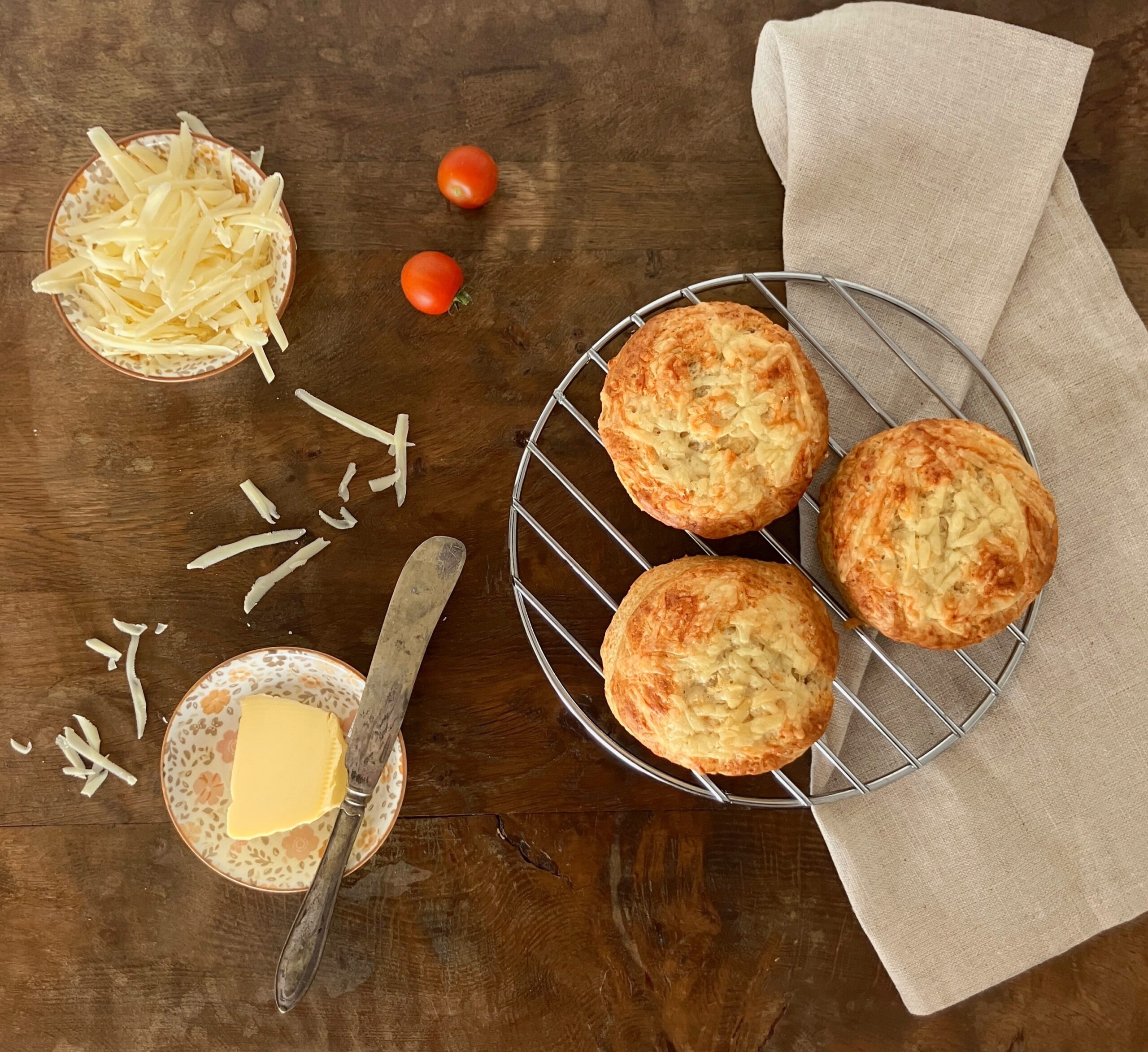
Where do scones originate from?
Scones are a British staple, and most people have heard of afternoon tea, where scones are served with jam and a dollop of clotted cream. So, who invented scones, and what on earth is clotted cream? Like many traditional British foods, there are not many concrete answers about where scones originated. They were first mentioned by a Scottish poet in the 16th century, but they reached their popularity during the Victorian era.
What is clotted cream and why is it illegal in the USA?
Clotted cream is the very well known accompaniment of scones and jam. It originates from Cornwall, a county right at the bottom of England. A true Cornish cream tea would not be complete without it. But what is clotted cream? It is a thick, yellow cream made by steam-heating unpasteurised milk and allowing it to cool slowly. As it does, clumps (or clots) of cream float to the top and voilà, we have clotted cream.
Unfortunately, it’s almost impossible to get the real thing if you live in the US: it’s illegal, due to the fact that the milk is unpasteurised. I think that just gives you the perfect excuse to cross the pond and visit the UK.
Cheese Scones
Cheese scones are not as famous or elaborate as their fancier counterparts, but they are nonetheless just as delicious. Only a handful of cupboard staples and you’re good to go. The type of cheese you use is up to you, but a sharp cheddar is the most traditional option. A strong cheddar cheese gives scones an amazing depth of flavour. That being said, you could use any cheese, so why not experiment? I think parmesan sprinkled over the top before baking would be delicious.
What can you serve with cheese scones?
To be honest, you can eat cheese scones whole, without anything else, and still thoroughly enjoy the experience. If you do need to add anything, a thick slather of butter will suffice. You could also go all out British, and throw on a dollop of tangy ploughman’s pickle as this would elevate them to stratospheric heights. These spelt cheese scones would be amazing on a picnic, as a light lunch or just a snack with a cuppa.
The secret to making great scones
So, is there really a secret to making great scones? Well, yes, there are some things you can do to help ensure you make gorgeous scones. However, there aren’t any secrets. The truth is, scones are easy to make. Relying on cupboard staples, it doesn’t take much time to whip them up, as you really just throw everything together. There are certainly no laborious, complicated procedures involved. If you follow these tips, you will end up with light, fluffy spelt cheese scones:
-
Always use cold ingredients:
The butter, the milk and the cheese must come straight from the fridge. In fact, the butter could even be frozen. Using cold ingredients ensures that your scones rise beautifully, and if you really want to make totally sure this happens, pop your bowl and utensils in the fridge, too. If you are making scones in a warm place (in the summer, for example), you might need to pop the scones in the fridge for 30 minutes before baking.
-
Don’t overwork:
Making scones is not a lengthy process. Traditionally, scones were made by rubbing in the butter. I hate the feeling of my hands being dirty, so always use my food processor. Because we want to keep the cold ingredients as cool as possible, using your hands might warm them up too much. Therefore, a food processor seems a sensible option. However, the downside of using a food processor could be the tendency to overwork the dough. It’s ready to add liquid when it looks like large breadcrumbs.
-
Liquid:
Add your liquid a little at a time. Too much liquid will make the dough soggy; too little will produce dry scones. Again, don’t overwork: it’s ready once the dough has just pulled together. Your dough should be a little sticky to the touch. This recipe has been devised for spelt flour, so if you use anything else, the amount of liquid you need may vary.
Other things to consider when making scones:
-
Raising agents
In most traditional scone recipes, self-raising flour is used (this is a flour blend that includes baking powder and sometimes, baking soda). Additionally, most recipes call for extra baking powder. In some cases, baking soda is also added (especially when using acidic ingredients such as Greek yoghurt, lemon or buttermilk).
The more baking powder you use, the pouffier the scones. However, it is possible to add too much baking powder to scones. An overuse of baking powder could leave your scones tasting a little bitter. So, be generous with it, but not over the top.
-
Rolling out/patting
Although you can roll out the dough, it is better to simply pat it into shape. Do not knead. The temptation if rolling out is to yet again, overwork the dough. Too much handling will make your scones denser and not as fluffy. Another disadvantage of rolling out your scones is that you could make the dough too thin. The end result would be, well, think hockey puck. Patting involves, as the name suggests, gently patting the dough down into the required thickness, and gently pushing into shape.
Scones should be around 2cm thick before going in the oven. You will not get all of your batch of scones from the first roll out, as you will need to repeat the process for a second, or even third time. Just remember to handle the dough as little as possible.
-
Don’t over-bake
Scones need a hot oven and short baking time. Keeping scones in the oven too long will result in dry scones. The texture should be fluffy and light.
I hope this helps! If you follow my tips on making great scones, you will end up beautifully golden spelt cheese scones that really are cheesy, savoury bites of deliciousness. Remember, homemade scones are supposed to be rustic-looking, especially if you’ve patted the dough, rather than rolling it. The shape doesn’t matter too much (and will rise in different directions anyway), so just try to aim for the same thickness to ensure that they bake evenly.
How using spelt flour can affect making scones
It’s also important to remember than not all scones are made equally. Even if you follow all of the above, there may be differences in the end result. And that’s okay.
Another thing to think about is that spelt flour behaves a little differently than regular flour. Although you will not notice any difference in flavour (other than a slight nuttier tang), you may need to adjust the liquid measurements when making scones with spelt flour.
Can I freeze cheese scones?
I am the only person who likes cheese scones in my house, so I can’t eat them all in one go. Well, I probably could, if I wanted to. Perhaps that’s an idea for a new Guinness World Record? So, yes, I freeze the rest of them. They taste just as good as the minute they popped out of the oven, all warm and delicious. Actually, they taste even better. I have eaten my latest batch, one by one, every weekend morning as a quick savoury snack. I pop them into the microwave then eat them with a slathering of butter. I’m down to just two left, so need to make some more.
So, if you loved my recipe for spelt cheese scones, I am pretty sure you’ll enjoy some of my other savoury favorites!
Spelt Cheese Scones (and the secret to making great scones)
Ingredients
- 225g (8 oz) spelt flour (see note 1)
- ¼ teaspoon salt
- ¼ teaspoon cayenne pepper
- 2 teaspoons baking powder
- ½ teaspoon bicarb (baking soda)
- 55g (2 oz) chilled butter (cut into small chunks)
- 120g (4¼ oz) grated strong cheese (I used cheddar)
- 90-120ml (6-8 tbs) milk (plus a little extra for brushing over the scones)
Instructions
- Heat the oven to 200℃ (400℉). Line a large baking tray with baking paper.
- Sift the flour, salt, cayenne pepper, baking powder and baking soda into a bowl.
- Add the butter to dry ingredients, and either rub in with your fingertips or use a food processor. Do this just until you have fairly fine "breadcrumbs".
- Sprinkle 100g (2½oz) of the cheese into the breadcrumb mixture.
- If using a food processor, a few spins will be all you need just to incorporate the cheese. If making the scones by hand, use your fingers (or even a whisk) to quickly mix in the cheese.
- Make a slight indentation (well) in the ingredients, and pour in around 90ml (6 tablespoons). Using your fingers or your food processor, work the ingredients until they start to pull together as a dough. Add more liquid if needed, but do so gradually. You want a slightly sticky (but not wet) dough.
- Flour a surface and pour out the dough. Roll or pat it into shape, remembering not to overwork it.
- Using a fairly large cutter - mine was fairly large 8cm (3¼") gently press straight down into the dough (don't wiggle or twist the cutter).
- Place on the prepared baking tray and brush over a little milk. Top with the remaining cheese.
- Bake in the oven for around 15 minutes, just until they are golden brown. Keep an eye on them, and start checking them at the 10 minute mark. Serve warm, with lashings of butter. Enjoy!
Notes
- You can use regular flour instead of spelt. I often interchange spelt and regular flour (and have never had any issues at all), but for the sake of transparency, I have not made this recipe with anything other than spelt flour. Please note: the amount of liquid may need to be adjusted if you are using different flours.

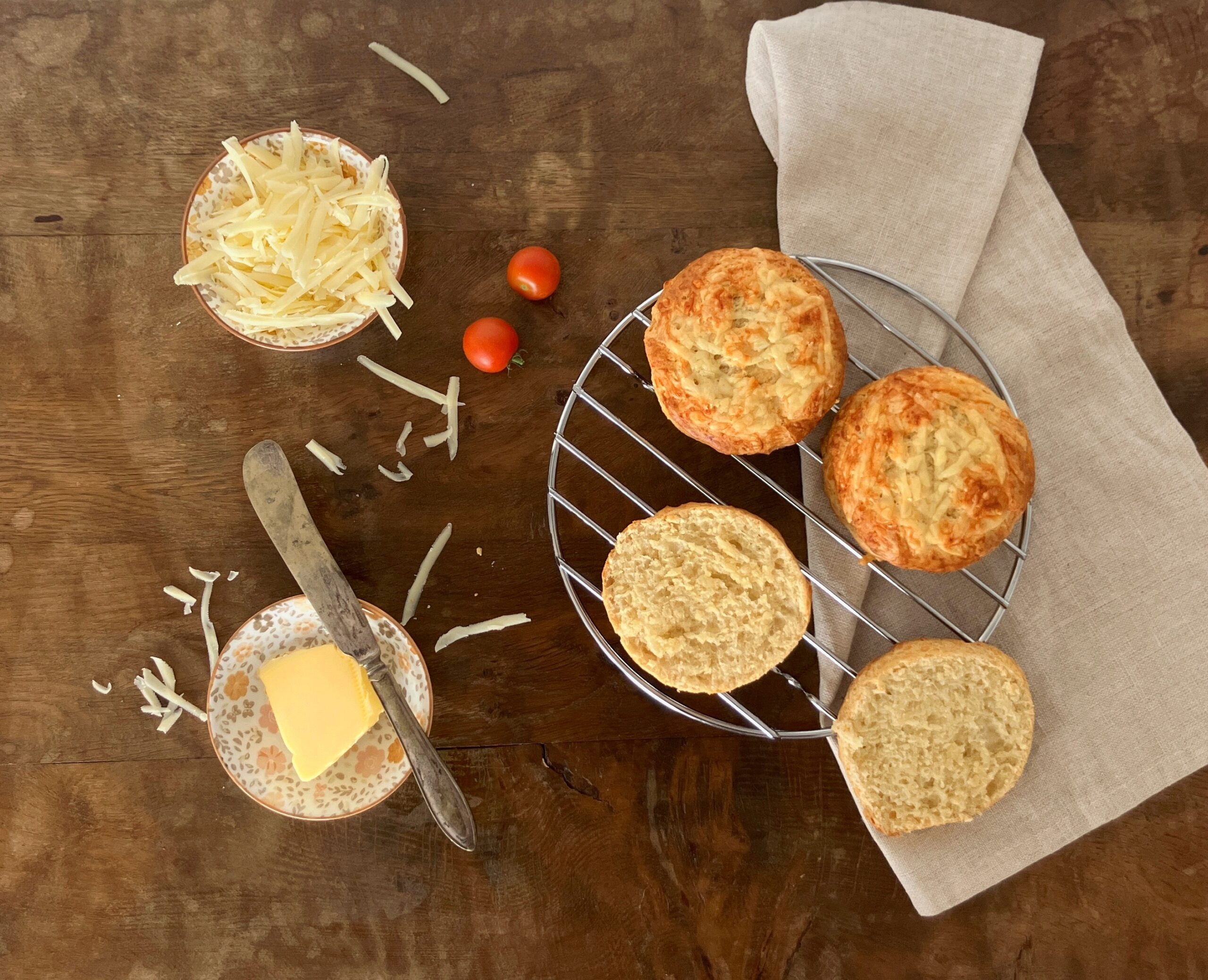
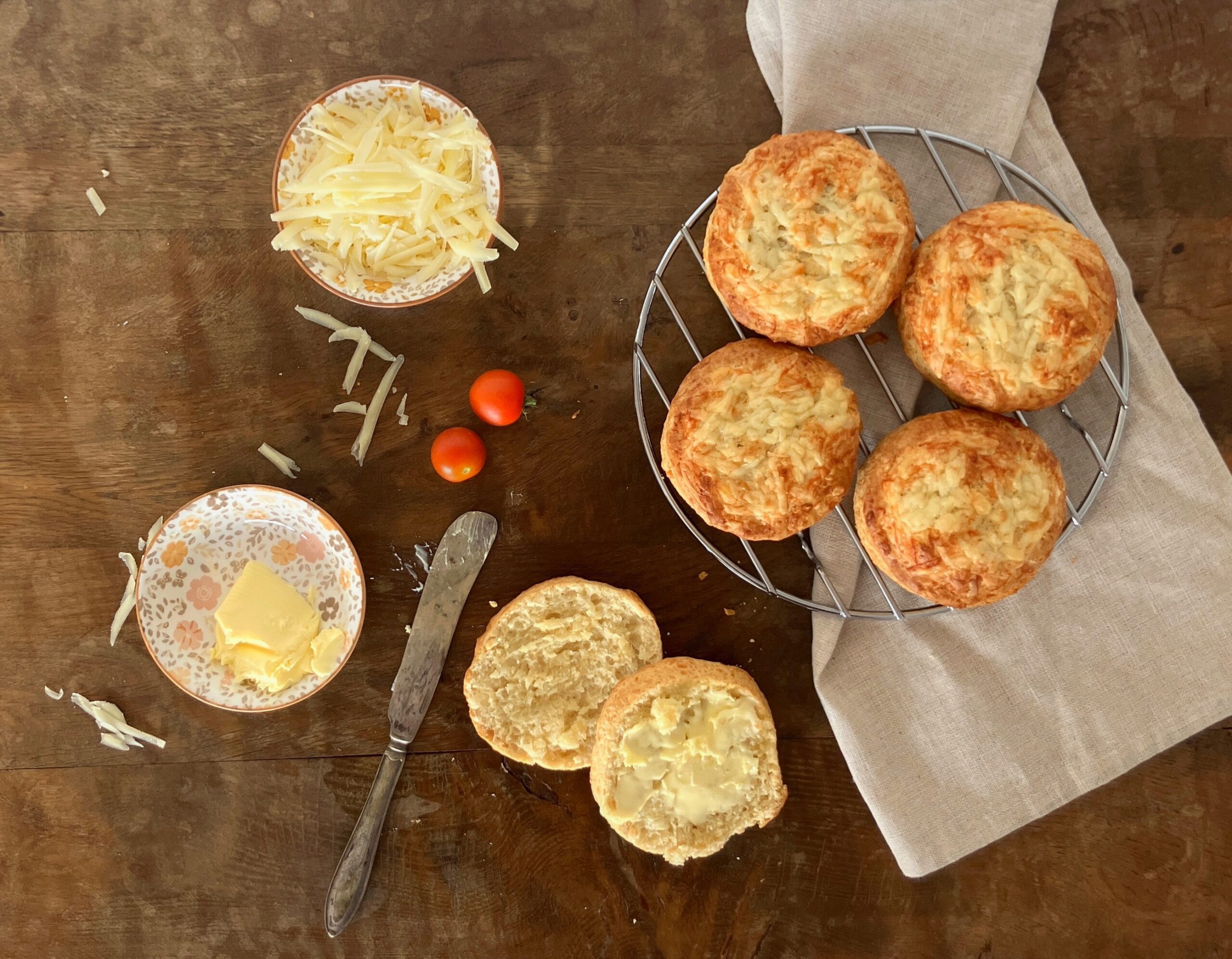
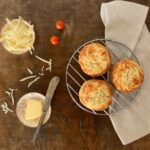
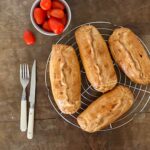

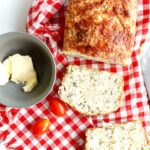
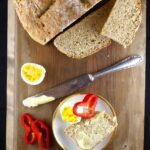
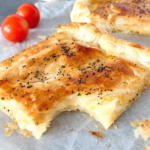
2 thoughts on “Spelt Cheese Scones (and the secret to making great scones)”